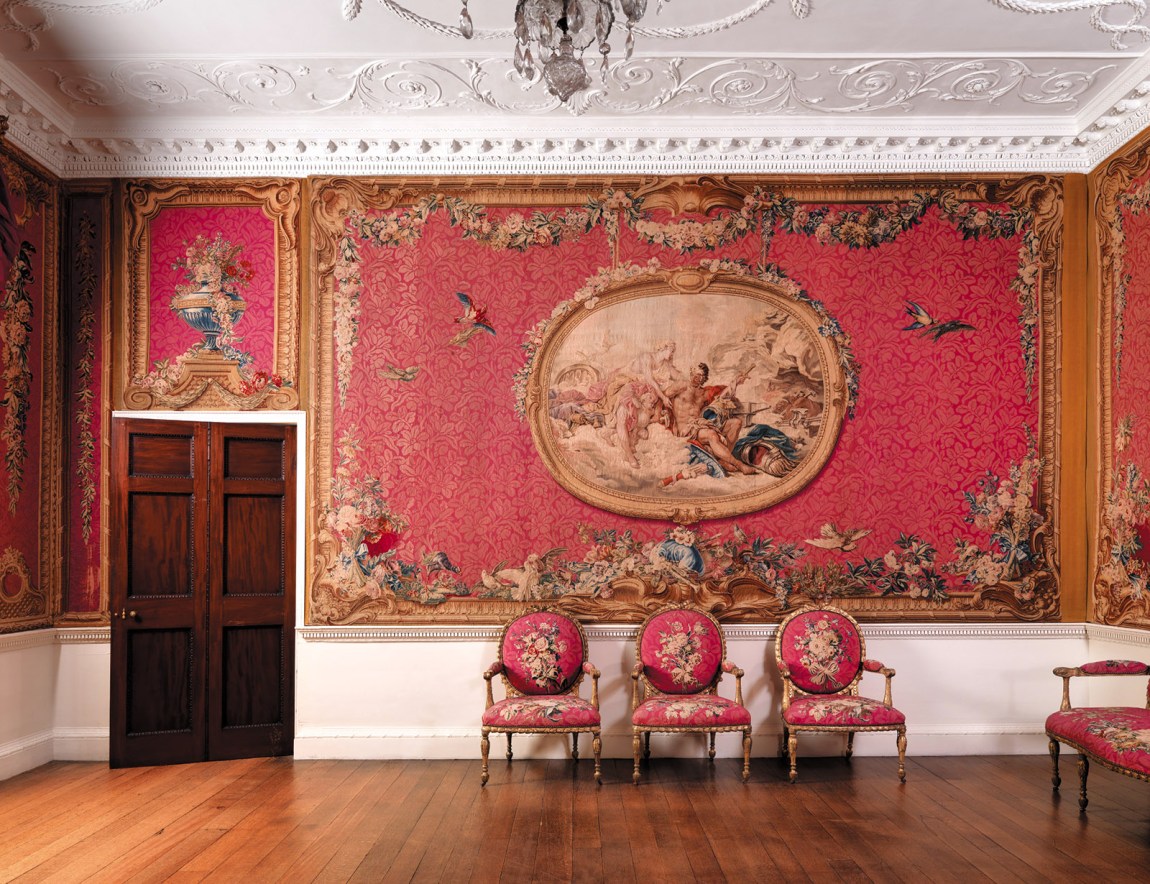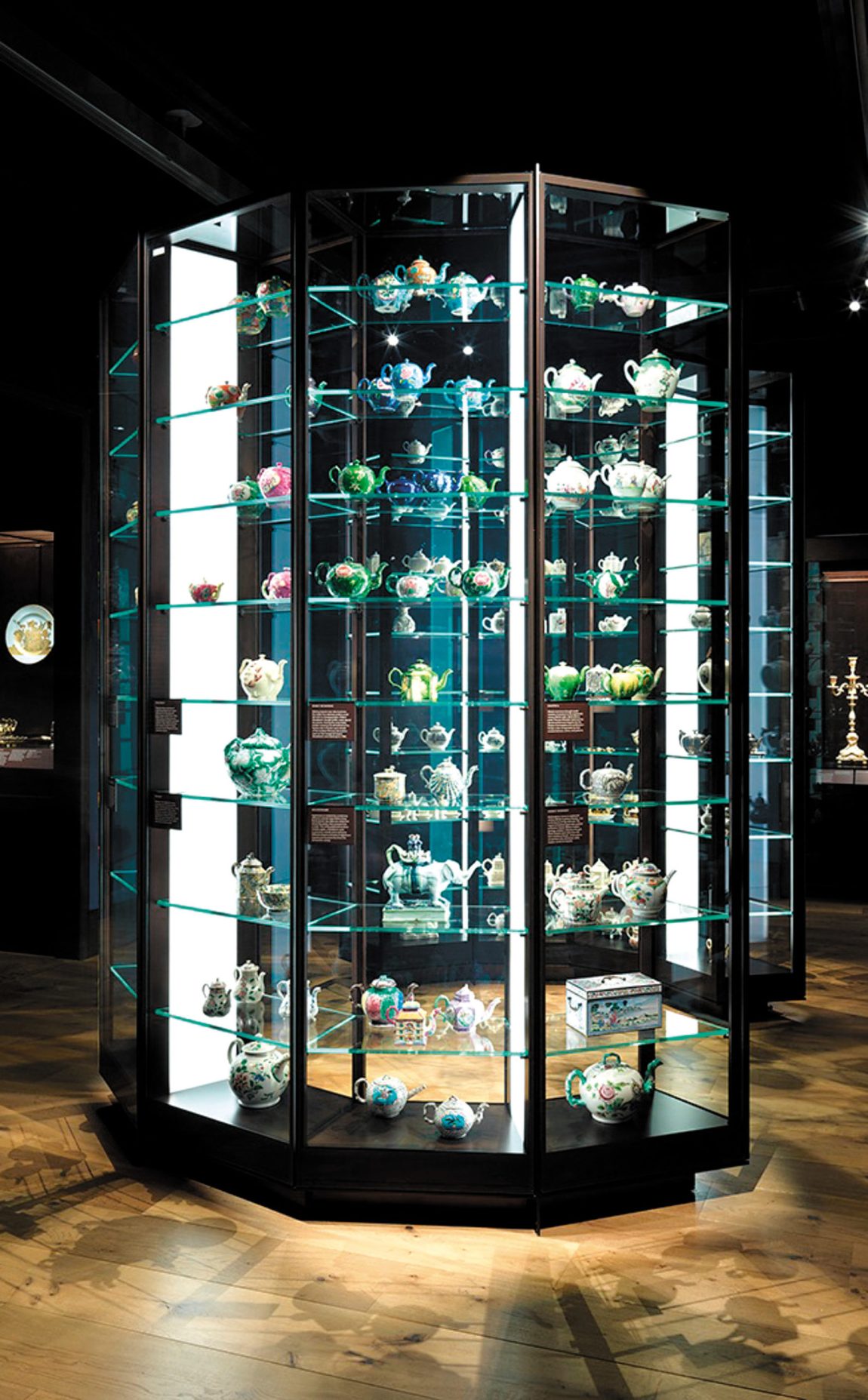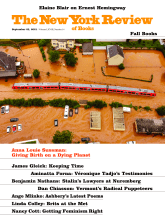The clock hangs in room 509, part of the Metropolitan Museum of Art’s glittering new British Galleries, which reopened in March 2020 after four years of renovation and reinstallation. Elegant and expensive, crafted of oak, ebony, and brass, the clock shows the date as well as the time. It is also illuminating about other things. Its maker was Ahasuerus Fromanteel, born in 1607 to Mordecai and Leah Fromanteel, who were newly arrived in Norwich, then England’s second-largest city. Why did he have such an unusual first name? It is possible that his proud parents wanted to reference the Persian king mentioned in the Book of Esther, but there may have been different, deeper inspirations. The opening years of the seventeenth century saw a flurry of broadsides identifying “Ahasuerus” as the given name of the legendary figure the Wandering Jew. By 1607 the Fromanteels were Christian converts. But they were also wanderers, forced out of Flanders by invading Spaniards; and whatever their motives, the couple seem not to have been concerned about giving their son a name that would enable him to integrate seamlessly into a new culture. Nor did he. As an adult, Ahasuerus returned regularly to the Netherlands, where the clockmaking was better.
Yet despite all this, samples of his work are included in the Met’s permanent display of British decorative art, which prompts some wider questions. What exactly constitutes British art and design? What, if anything, renders it distinctive? And why should it now be allotted ten rooms in one of the world’s great museums?
In the past, the answers to these questions would have seemed to many self-evident. In ways that the TV series Downton Abbey still appeals to, “British” art was once widely viewed as essentially and desirably associated with the tastes and aesthetics of the aristocratic classes of England, Wales, Scotland, and Ireland. Especially among America’s robber barons of the Gilded Age and their descendants, and for many other affluent and upwardly mobile people, acquiring patrician British and Irish stuff—furniture, paintings, silver, sculpture, entire rooms gutted out of country houses—appealed at two levels. These things seemed to offer cachet and a patina of established gentility. They were also available in rising abundance at (relatively) knock-down prices. From the late nineteenth century onward, agricultural depression, punitive taxation, social change, war, and revolution increasingly obliged British and Irish landowners to sell their art collections and houses. Americans were the most prominent buyers.
The railroad magnate Henry E. Huntington purchased swathes of British paintings for his Pasadena mansion, which grew into the Huntington Art Gallery. Paul Mellon, grandson of the Pittsburgh banker and financier Thomas Mellon, passionately hunted down canvases depicting British stately homes and gardens, their elegant owners, pedigree racehorses, and taut hunting dogs. Gifted with money to Yale in the 1960s, this collection formed the genesis of what is now that university’s remarkable Center for British Art.
From its inception in 1870, and to a degree, the Metropolitan Art Museum displayed a similar hankering for relics of transatlantic patrician taste. Some of these earlier acquisitions still figure in the new British Galleries. One of the most spectacular is a grand wooden staircase originally installed in the 1670s in Cassiobury Park, the great and now lost Tudor house in Hertfordshire that belonged to the Earls of Essex. The stairs are restored so you can walk on them, and the banisters have been cleaned so you can see how each of their carved birds, enmeshed in foliage, has been given two heads, one to be viewed and admired from each side. None of this craft and beauty, however, saved Cassiobury when the family finally went broke in the 1920s. The Dowager Countess of Essex, a New Yorker by birth, put the contents up for sale, and the Metropolitan Museum’s agents, along with other American galleries and dealers, quickly pounced.
One hundred years later, much has changed, not least as far as the United States is concerned. Images of dead aristocrats and their gilded houses and collections can still possess an appeal. But transatlantic ties have weakened. Structures of power and social and demographic circumstances are very different, and so, vitally, are ideas. In art galleries and museums, as in other locations of cultural inquiry and scholarship, there has been a decided turn in recent decades toward contextualizing and even provincializing what is perceived as European. Last spring the director of the Newark Museum of Art, Linda Harrison, defended the sale of a number of its long-held oil paintings, including Thomas Cole’s The Arch of Nero (1846), and not merely on fund-raising grounds. “The influence of Europe on American culture,” she argued, was already an “extremely well-told story.” Time to move on. Time to diversify.
Advertisement
Those responsible for curating these new galleries have been careful to modulate their story line and selection of exhibits in accordance with these shifting positions and aims. The emphasis here is not on how British artists and craftspeople were inspired by what the art historian Athena S. Leoussi calls “their own, ethno-cultural heritage of symbols, memories, myths, values, traditions and natural environment.” Nor are patrician ways of seeing and systems of patronage privileged to the same degree as before. The stress is rather on how, for good and ill, these islands have been interconnected with other peoples and other geographies. “One of the reasons The Met can justify having galleries dedicated solely to British decorative arts and design,” argues Associate Curator Wolf Burchard in The New British Galleries, “is that they tell a truly international story.”
To a considerable degree, this is a tonic strategy, which helps to illumine some of the prime influences on varieties of “British” art and design. Take the Protestant Reformation. In England, its immediate precipitant was famously domestic: Henry VIII’s failure to sire a healthy and legitimate male heir. The resulting fracture with Rome and distancing from the cultures of Catholicism—though never total—proved critical and persistent. Nonetheless, this crisis actually brought England, along with Wales and Scotland, and in different ways Ireland, closer to parts of continental Europe and beyond. To be sure, militant iconoclasm led to the destruction of many of the monastic buildings, vivid altarpieces, gilded statues, and ornamental frescoes that had long been a feature of Catholic worship. An anonymous fifteenth-century panel of the Entombment is almost the only early modern sacred image on view here. Reformation hostilities also constricted ways of thinking and acting. These galleries open with the Florentine Pietro Torrigiano’s somber and impressive bust of John Fisher, the cardinal and scholar who was executed in 1535 for resisting Henry’s changes.
But the Reformation also helped foster a Protestant International, with major cultural repercussions. Over the years, domestic religious dissidents frequently sought refuge and fresh ideas overseas. One of the most unusual exhibits in these galleries is a set of vividly painted wooden trenchers featuring improving extracts from the Lutheran clergyman Thomas Becon’s book The Governance of Virtue. This was reputedly written in the 1550s, when he was on the run in Strasbourg and Frankfurt from the “bloody, boisterous, burning time” briefly enforced in England by the Catholic Queen Mary. Protestant refugees also crossed the Channel in the opposite direction. Some of eighteenth-century London’s most prominent silversmiths, conspicuously Paul de Lamerie, whose work is featured in the galleries, were Huguenots in flight from Louis XIV after his revocation in 1685 of the Edict of Nantes, which had granted French Protestants limited rights eighty-seven years earlier.
The Reformation also affected British art more fundamentally. For three centuries after the 1530s, the ecclesiastical sector in these islands—denuded of much of its wealth and autonomy—was rarely able to function as a major and reliable source of artistic patronage. Much the same was true of the Crown. Especially after the execution in 1649 of Charles I, shown here in a portrait by the Dutchman Daniël Mijtens, and until the last third of the eighteenth century, British monarchs lacked the dynastic security and assured affluence to cultivate and employ artists and designers on a scale comparable to that of many of their European and Asian royal counterparts.
One consequence of this relative paucity of state and church patronage was a lurking sense that Britons simply did not “do” art at the same accomplished level as the Spanish, French, Italians, and Germans, or indeed the Qing Empire. Britain might be successful at manufacturing artifacts cheaply and on an ever more impressive industrial scale. But as the painter and printmaker William Hogarth complained in the mid-eighteenth century, the fine arts were often perceived as somehow beyond and outside its natives’ capacity. This sense of innate limitations still lingered in 1851, the year of London’s Great Exhibition, the world’s first trade fair. This is often represented as a supreme expression of Britain’s global preeminence by that stage. Yet the official thinking behind the event was mixed. Some of the organizers envisaged it very much as a learning opportunity, a chance for Victorian Britons to see and scrutinize in their own capital the superior design capabilities of foreign competitors.
This background helps account for both the marked scale of aristocratic patronage in Britain and for some of the characteristics of that patronage. By 1700 many rich British and Irish patricians possessed more disposable income and freedom of maneuver than their monarchs, who were now more closely regulated by Parliament. And many of these aristocrats and great landowners (especially the men) made a practice of undertaking grand tours of the Continent. Such travels often reinforced their assumptions that the best and most prestigious art was unavailable at home and needed to be purchased and shipped in from abroad.
Advertisement
One sees these tendencies at work in the new British Galleries’ tapestry room. Its original setting was a great Worcestershire mansion, Croome Court, built and furnished after 1751 by the 6th Earl of Coventry at a cost equivalent to £40 million in today’s money. As this room demonstrates, elite appetite for continental European artworks extended far beyond importing vast quantities of old master paintings and statuary. Coventry employed an Englishman (Capability Brown) to order his gardens and a Scot (Robert Adam, who made the revealing career decision to train in Rome) to design much of Croome’s interior. Yet for all of Coventry’s partial resort to local talent, the tapestries in this room—like the pictorial medallions on its walls, like its pink settees and chairs, like much of the lavish furniture he purchased for other parts of the house—are emphatically French, and top of the line. Where did the money for such extravagant patrician cultural investment come from?
Since 2000, scholars such as the historian Stephanie Barczewski in her Country Houses and the British Empire, 1700–1930 (2014), along with cultural organizations such as the National Trust of England and Wales, have documented with care and detail the degree to which British and Irish magnates derived their wealth not only from extensive domestic landholdings, office-holding, and investments, but also from taking a privileged cut of the profits of empire, often including those from slave-trading. The Coventrys, custodians of Croome Court, had long-standing connections with the British East India Company, while in the early 1800s a member of the family married the daughter of a Jamaican plantation owner.
Increasing interest in the links between empire and British cultural tastes and practices has influenced these galleries. The curators are rightly insistent that the objects on view sometimes derived from or were partially funded or inflected by overseas aggression, territorial expansion, and exploitation. Some of the exhibits also suggest, however, the challenges involved in assessing the perceptual significance of all this.
Consider the dramatic seven-foot-tall glass display cases in room 510, which contain over 120 wonderfully designed Georgian teapots. These objects certainly reflect a widening cultural practice evident on both sides of the early modern Atlantic: namely the consumption and ritual celebration of tea, imported at this stage from China. It is also unquestionably the case that this fast-expanding tea habit relied heavily on the armed galleons of the British East India Company and on a range of South and East Asian workers and cultivation patterns. But how does one ascertain and measure the impact of all this on ideas and knowledge among ordinary Britons? Even today, when there is greater emphasis on fair trade, how many people pay close attention to the provenance of the artifacts and substances they consume and the circumstances of their making, and how far do these things inform their reactions to the wider world?
Investigating such issues is made more difficult for the curators of these galleries by the constraints within which they have to work. Like most art museums, and partly for reasons of conservation, the Met exhibits its works on paper separately from its three-dimensional objects and paintings. As regards the evolution of British art and design, this convention has a particularly limiting effect. From the late 1600s, London printmaking became progressively more important and innovative. Often framed and hung on the walls of houses, shops, clubs, and taverns, prints became a significant shaper of ideas and debate. One cannot track changing British responses to the slave trade, for instance, without incorporating print culture into the wider visual record.
Look, for example, at the exuberant and troubling silver sugar box on view in these galleries, made in the 1740s by Paul de Lamerie. A rich family’s status symbol, it is decorated with a palm tree and a man cutting sugar cane who looks nothing like an African slave in bondage in the Caribbean. Then switch from this confection to an image that ideally should be on display in the same room: the abolitionist engraving published in 1788 of the Liverpool slave ship Brookes, showing 482 black men, women, and children lying close-packed and chained together on its lower decks, bound on the Middle Passage.
During the late eighteenth and early nineteenth centuries, this interior view of the Brookes was regularly reproduced in books, pamphlets, posters, newspapers, and models. This level of exposure was due in part to the palpable changes in British responses to the slave trade. But the multimedia impact of this print of the Brookes was also owing to the fact that such (in every sense) graphic images could unsettle the distance between suffering subject and comfortably detached observer, and do so on a much wider scale than the well-known, relatively genteel medallion of a carefully kneeling slave manufactured by Josiah Wedgwood, which is on view here.
One measure of the quality, range, and intelligence of these new British Galleries is, indeed, that they prompt one to speculate how they might be fine-tuned in order to reveal even more, and how museum displays in general might fruitfully be reordered. The British Galleries are situated right next to the Met’s American Wing. This is welcome but not quite enough, because the divisions between varieties of American art, especially before 1850 (including occasionally Native American–produced art), and varieties of “British” art were imperfect and unstable. Think of Thomas Cole, whose Arch of Nero was deaccessioned by the Newark Museum of Art. Partly for patriotic reasons, he is usually labeled an American artist. But Cole, the son of a woolen manufacturer, was born in Lancashire, England, in 1801, then one of that country’s more industrialized and urbanizing regions. He did not emigrate to Philadelphia until he was eighteen. It is possible, then, that Cole’s subsequent drive to celebrate America’s still wild and empty landscapes, as a founder of what became the Hudson River School, was in part a reaction to his own very different, far more crowded place of origin. The strict regional and national layouts of most art galleries, however, tend to discourage such transcontinental speculations.
Cole’s career points to something else important. British art and design were not simply shaped by overseas influences and creators. These self-same species of art and design, and some of their exponents themselves, exercised influence abroad, and not just in Britain’s formal empire. Toward the end of these galleries, there are some wonderfully audacious household goods designed by Christopher Dresser: a coffee pot, a teapot, two stylized toast racks, and more. A Glaswegian by birth, Dresser was essentially and in multiple senses a mobile man.* He was a forerunner of the Arts and Crafts movement whose work encompassed ceramics, carpets, wallpaper, textiles, and furniture, as well as metal. He was also a crosser of land and sea borders, moving and exhibiting his creations not just in Scotland and England and in continental Europe and the United States, but also with delight and aesthetic profit in parts of East Asia.
It was a “strange thing,” he wrote in 1873 regarding what is now London’s Victoria and Albert Museum,
that the perfect works of the East are so poorly illustrated in this national collection, while costly, yea, very costly works of inferior character, illustrative of Renaissance art, swarm as thickly as flies in August.
Dresser’s remarks stand as a reminder that arguments over the geographical coverage of the world’s museums and the dangers of cultural Eurocentricity are nothing new. The flow of Dresser’s own life and work, like these splendid new British Galleries, is also a reminder that—as with other continents—“Europe” and its component countries have in practice been protean and porous entities. Organizing present-day and future art galleries and museums to reflect and communicate these points, without gratuitously provincializing anywhere, is the difficult but essential trick.
This Issue
September 23, 2021
Conceiving the Future
The Well-Blown Mind
Hemingway’s Consolations
-
*
Dresser’s place of origin serves to raise another point. In part because of their chosen themes, these galleries do not explore the relations, overlaps, and divergences between English, Scottish, Irish, and Welsh artistic developments and design production. ↩





